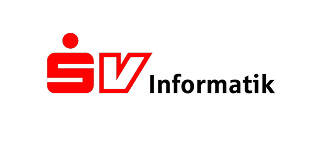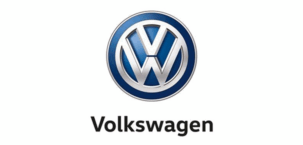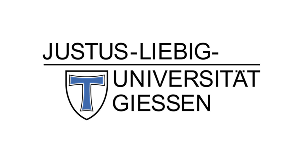Simplifying Complexity
PRODUCT
SOLUTION
Oracle Reports To JASPER ➚
PITSS.CON DataCube Repository ➚
Oracle Forms To APEX ➚
Upgrade Forms To Forms ➚
SERVICE
Simplifying Complexity
In scope, On Time and Under Budget.
The Power Behind PITSS
Customers
Countries
Industries
As Broadpin, we combine decades of experience with the innovative strength of Oracle technology. We turn complexity into clarity, potential into performance, and technology into lasting business value for organizations of every size and industry. What we stand for has not changed: Trust, quality, and measurable success. What’s new is the scale, a global network of experts sharing knowledge, best practices, and resources across borders.
Broadpin – guiding your evolution.

As Broadpin, we combine decades of experience with the innovative strength of Oracle technology. We turn complexity into clarity, potential into performance, and technology into lasting business value for organizations of every size and industry. What we stand for has not changed: Trust, quality, and measurable success. What’s new is the scale, a global network of experts sharing knowledge, best practices, and resources across borders.
Broadpin – guiding your evolution.

Say No More!
The Power Behind PITSS
Customers
Countries
Industries
With PITSS Say No More!
With the help of our intelligent product PITSS.CON, we understand your Oracle Forms-based system, your business logic, and your industry! The product provides reverse documentation features to create the raw requirement specification failure free. No endless workshops and lengthy interviews needed!
Modernization is a chance to rethink usability. Our product PITSS.CON has a built-in feature to record real user workflows and compare what the system can do versus what is actually being used. It help you to improve user experience by clean up what’s no longer needed and prioritize what users really need — including space for new features.
The Analyse capabilities of our product PITSS.CON ensure a 100% view of the tasks of the modernization project including individual topics which derive out of your way of implementing in the past
our PITSS.CON Product thinks like an Extraordinary engineer!
From Strategy to Delivery
our PITSS.CON Product thinks like an Extraordinary engineer!
From Strategy to Delivery
you’ll know exactly what you project will cost.
No hidden fees, Just expert analysis.
you’ll know exactly what you project will cost. No hidden fees, Just expert analysis.
| Strategic Analysis & Decisions | We listen to your goals and challenges. Our process begins with a thorough analysis using the PITSS.CON suite, which reads your source code, maps system complexity, and visualizes processes. This data-driven approach helps us develop a long-term strategy or determine the next steps. We uncover hidden inefficiencies like dead code and redundancies, giving you clarity for your next moves: whether that’s modernizing your business processes, optimizing them, or transitioning fully or in clusters. |
| Project Execution | The project execution phase delivers your transformation — whether it’s reengineering business processes, modernizing legacy applications, or re-platforming your solutions to the cloud.
After tailored preparation, automated code optimizations accelerate delivery, reduce risks, and lower costs. Our smart Code Modelers support modern architectures that retain and evolve your business logic. With parallel operations, old and new applications run side-by-side to ensure a smooth and complete transition. |
| We don’t just deliver a new application — we hand you the keys.
With PITSS.CON, your teams gain the tools and know-how to manage modernized applications independently. Our commitment doesn’t end at go-live. Whether you need expert advice, occasional help, or dedicated support — we stay by your side. | |
Strategic Analysis & Decisions
We listen to your goals and challenges. Our process begins with a thorough analysis using the PITSS.CON suite, which reads your source code, maps system complexity, and visualizes processes. This data-driven approach helps us develop a long-term strategy or determine the next steps. We uncover hidden inefficiencies like dead code and redundancies, giving you clarity for your next moves: whether that’s modernizing your business processes, optimizing them, or transitioning fully or in clusters.
Project Execution
The project execution phase delivers your transformation — whether it’s reengineering business processes, modernizing legacy applications, or re-platforming your solutions to the cloud. After tailored preparation, automated code optimizations accelerate delivery, reduce risks, and lower costs. Our smart Code Modelers support modern architectures that retain and evolve your business logic. With parallel operations, old and new applications run side-by-side to ensure a smooth and complete transition.
Empower & Continuous Support
We don’t just deliver a new application — we hand you the keys. With PITSS.CON, your teams gain the tools and know-how to manage modernized applications independently. Our commitment doesn’t end at go-live. Whether you need expert advice, occasional help, or dedicated support — we stay by your side.
We base every project plan on a thorough application analysis, mapping risks, timing resources, and defining expectations with precision using PITSS.CON tools
Success Stories in Action
record system at the University of Sheffield
Oracle Forms Upgrade – Migration to Oracle APEX – Process Analysis & Optimization
“PITSS.CON products have been really key to enable velocity of development and to manage the complexity of a stack that is now based upon Oracle Forms, Oracle APEX as also a lot of Java components and PL/SQL.
The recent edition allows us how to use process mining to look how data and process flow across the University and different areas and see where processes get stuck and where our data goes and use this to redesign those processes more efficient.”
Oracle Forms Upgrade – Migration to Oracle APEX – Process Analysis & Optimization
“PITSS.CON products have been really key to enable velocity of development and to manage the complexity of a stack that is now based upon Oracle Forms, Oracle APEX as also a lot of Java components and PL/SQL. The recent edition allows us how to use process mining to look how data and process flow across the University and different areas and see where processes get stuck and where our data goes and use this to redesign those processes more efficient.”
PITSS?
Meet growing demands with fast, scalable architecture.
Eliminate vulnerabilities with modern, compliant systems.
Enhance usability with intuitive, modern interfaces.
Less manual coding means lower maintenance and costs.
Adapt and innovate with ease, without heavy tech overhead.
Less manual coding means lower maintenance and costs.
Meet growing demands with fast, scalable architecture.
Eliminate vulnerabilities with modern, compliant systems.
Adapt and innovate with ease, without heavy tech overhead.
Enhance usability with intuitive, modern interfaces.
Trusted Experts at Every Step
Our experienced full-stack team—developers, architects, strategists—guides you through every phase. Whether working alongside your team or independently, we ensure a seamless, low-risk transformation.
Trusted Experts at Every Step
Our experienced full-stack team guides you through every phase. Whether working alongside your team or independently, we ensure a seamless, low-risk transformation.










